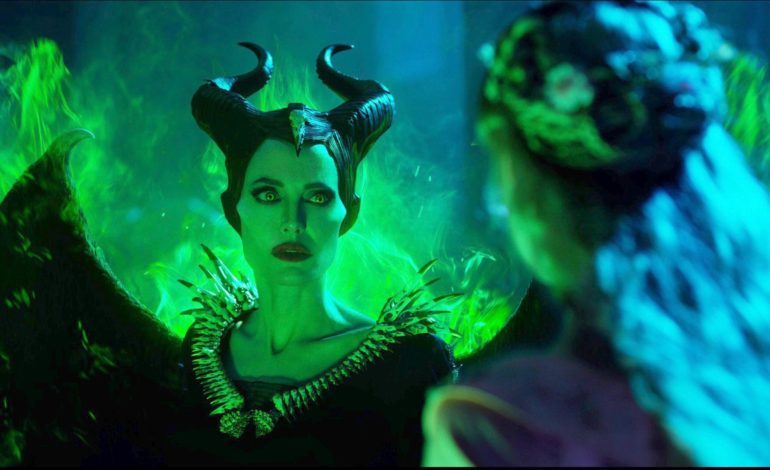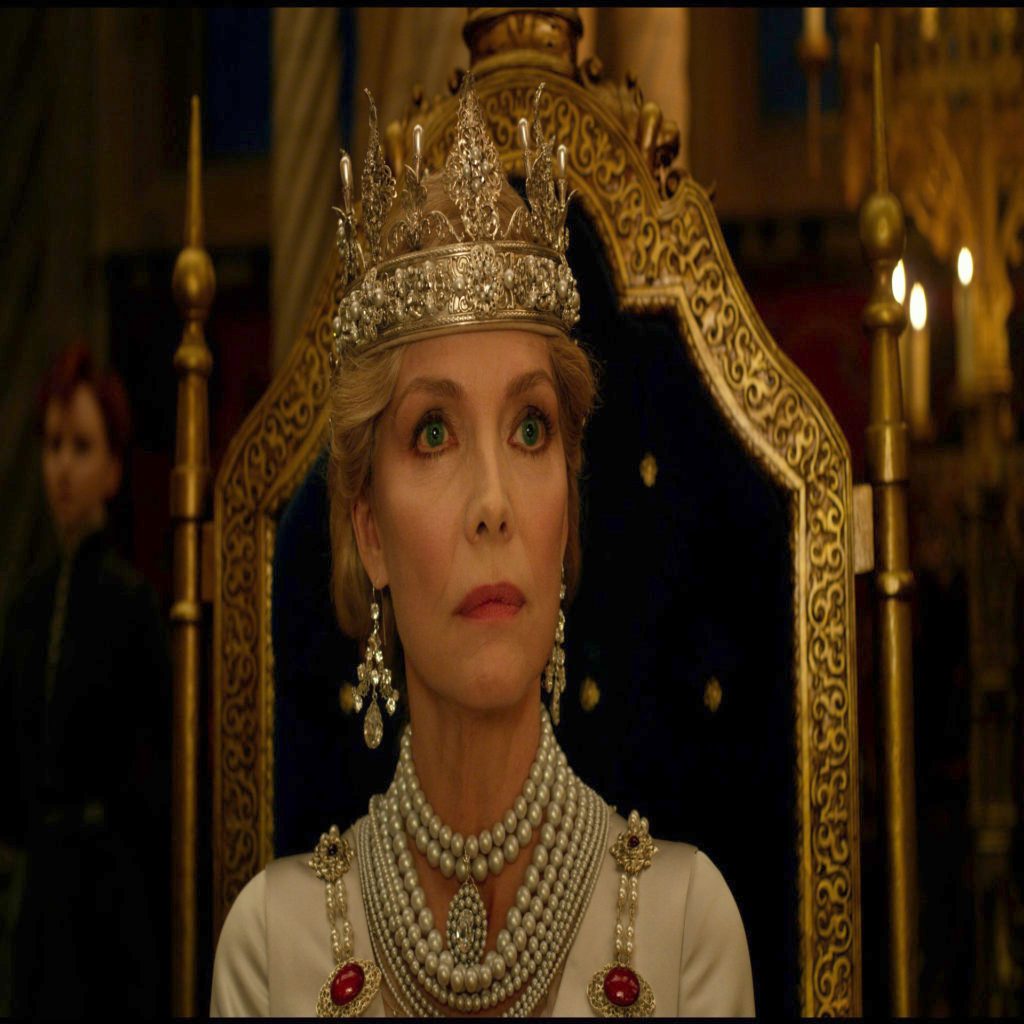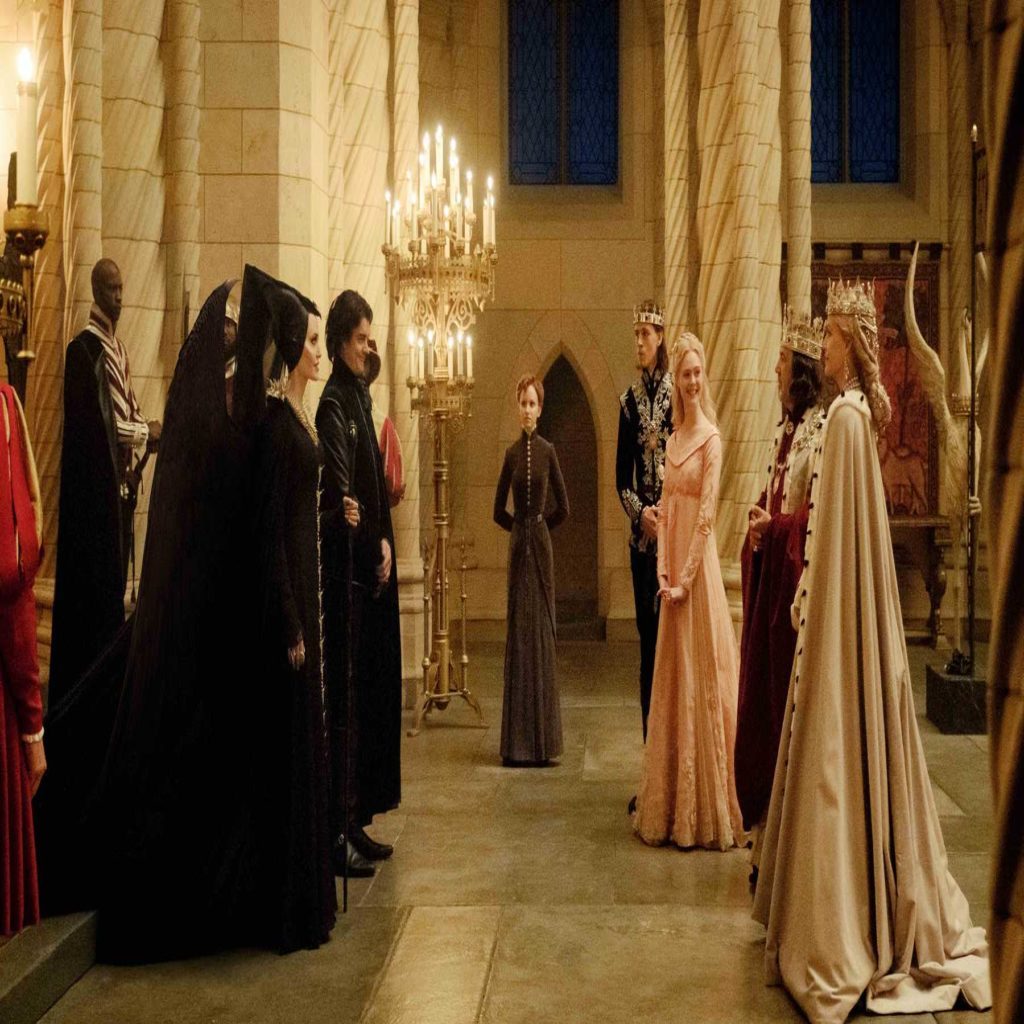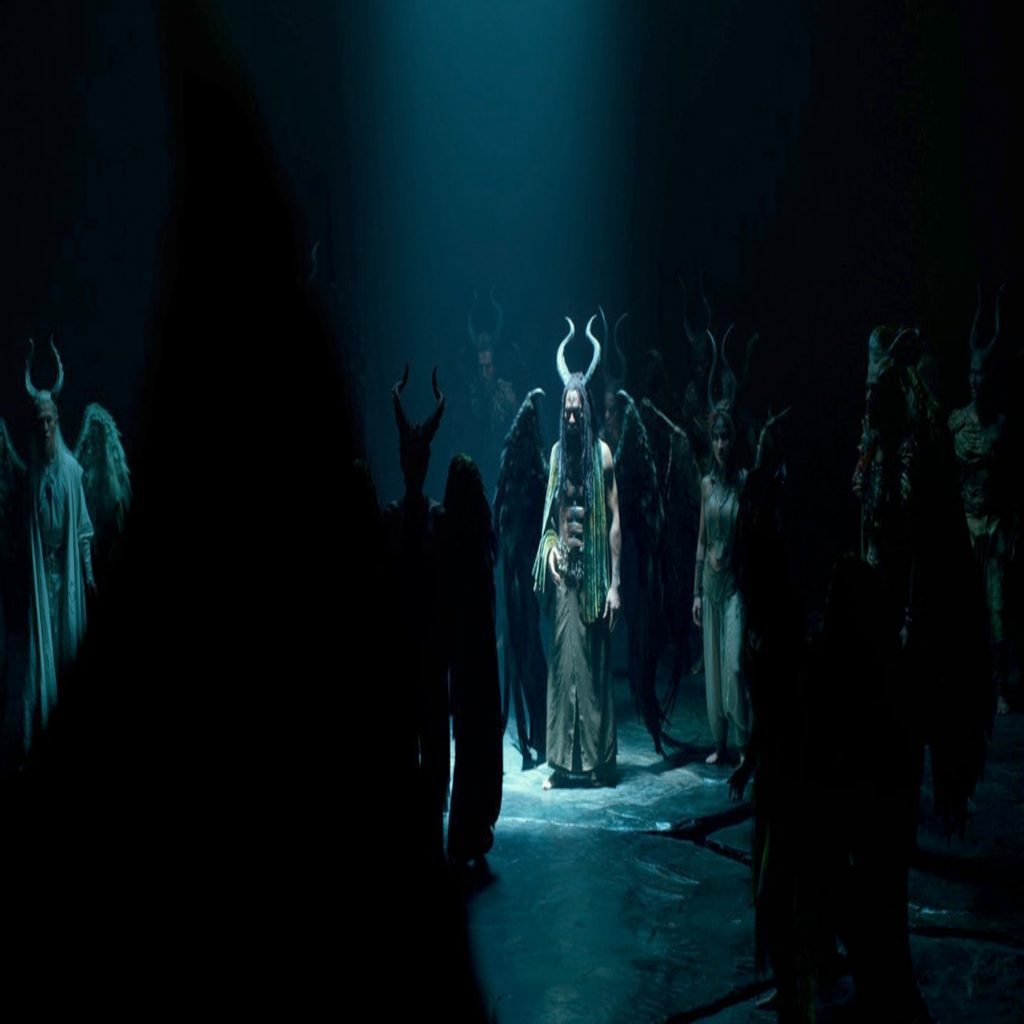

We’ve all had awkward dinner table conversations with ideologically divisive family members. In the era of Trump, it’s even become somewhat of a meme, spurring SNL skits and think pieces about the difficulty of interacting with racist relatives at family gatherings. In Joachim Rønning’s Maleficent: Mistress of Evil, the bigot is not a stereotypical uncle drunk on eggnog at Christmas supper—instead, it’s Sleeping Beauty’s soon-to-be mother-in-law, a queen dripping with diamonds and faux civility and played to icy perfection by Michelle Pfeiffer.
Although this feast scene is an entertaining and creative take on a familiar, real-world experience, the rest of the movie’s prejudice narrative feels a bit trite. While the first Maleficent destroyed social norms rather elegantly through its subversive Wicked treatment of the classic story and characters, this film, for some reason, feels the need to have an explicitly political plot. There’s no real problem with that, besides the fact that the plot just isn’t very good—but Mistress of Evil shines in all its subtler elements, specifically the mother-daughter relationship between Maleficent and Aurora.


In 2014, Maleficent did something unique: it turned the iconic fairytale villain into a sympathetic character. The winged fairy Maleficent (Angelina Jolie) rules over a magical forest realm called the Moors but goes bad after her former lover Stefan cuts off her wings (which the cast and crew have acknowledged as a metaphor for rape) in exchange for the throne of a nearby kingdom. You know what happens next: at the christening of Stefan’s daughter Aurora (played all grown up by Elle Fanning), Maleficent curses the baby to prick her finger on a spindle at 16 and fall into a death-like. However, as Maleficent watches over Aurora and practically raises her as her own, she comes to regret the curse she cast. When Aurora slips into her fated coma and Prince Phillip (Brenton Thwaites) kisses her to no avail, it turns out to be Maleficent whose true love can wake Aurora—motherly love, that is.
Mistress of Evil picks up shortly after where the first film left off. At a kind of Moors town hall, Aurora wonders about some disappeared fairies and scolds her whimsical subjects’ contempt for humans. Also, a small porcupine-like fairy who communicates only through Cardi B noises pesters Aurora and probably the audience. It is oddly nice to see Aurora not smiling all the time here, instead actually getting frustrated and saying things like “I’m not in the mood for this” like a real person. In the first film, Fanning didn’t get to do much besides giggle and look like a Glossier ad.
Aurora hopes to bridge the conflict between the forest creatures and their mortal neighbors. Enter Phillip, now played by Harris Dickinson, who seems incapable of expressing emotion. I thought Thwaites was vanilla, but at least he was a little goofy—meanwhile, it was hard to remember this guy even existed while he was still on screen. I suspect Dickinson is a good actor—he starred in 2017’s Beach Rats, which I admittedly have yet to see— stuck in an extremely basic role. Anyway, Philip proposes, and Aurora excitedly accepts, both out of love and a desire to bond the Moors with the kingdom of Ulstead.
Meanwhile, Maleficent has been skulking around with her trusty shapeshifting bird Diaval (Sam Riley), capturing the human poachers responsible for those missing creatures. She doesn’t support Aurora’s engagement and expresses disdain for Phillip in the way of any other domineering mother. While Jolie’s delivery as the disapproving helicopter parent is hilarious, it plays into the film’s weird tonal structure. This opening portion of the movie is all very forcibly comedicand rushed, hastily checking off plot points and shopping for laughs. I legitimately love this rom-com mom version of Maleficent, but it also sucks most of the drama and mystery out of her character. We are reminded of Maleficent’s power, however, when she and Aurora go to Ulstead to meet Phillip’s parents, King John (Robert Lindsay) and Queen Ingrith (Pfeiffer), and the two matriarchs butt heads.


The rest of the plot involves a war between humans and fairies, which—despite being highly predictable—I will not spoil. Instead, I’ll touch on the fairy army, a group of beings called the Dark Fae whom Maleficent is surprised to find look exactly like her. They all possess a kind of terrifying beauty, with big brown wings and razor-sharp cheekbones sure to inspire endless contouring tutorials. They’ve been forced into hiding by a world which fears and villainizes them. I don’t fully understand why they don’t just live in the Moors, where they’d be accepted like Maleficent, but whatever.
This is where the film jumps from Meet the Parents to Avatar, and the political metaphor gets messy. Most of the movie’s minority actors play Fae and are adorned with lots of vague tribal and orientalist imagery, which often felt lazy in its symbolism. The group’s leaders are Conall (Chiwetel Ejiofor), who wants peace, and Borra (Ed Skrein), who wants war. Skrein, who had a brief stint as Daario Naharis in Game of Thrones before leaving to work on a Transporter reboot, was not the only thing that called me back to the HBO fantasy series; the Fae’s fireside drum circle and dinner are reminiscent of a Dothraki wedding.
Although the allegories verge on the literal side—there’s even basically a gas chamber at one point—I won’t complain about a film that condemns hate. I’m so glad it does. It’s just that the way it goes about that condemnation is inconsistent. The end of Mistress of Evil flip flops from massacre to celebration rather quickly. Also, I can’t help but think of Phillip with the Good Hair as a little complicit, or at the very least, inexcusably ignorant. Does he really not know about his own mother’s intolerance? The same goes for King John. This issue never really comes up.


While the discrimination narrative is timely and important, it doesn’t offer anything particularly new or inventive. I actually think the most progressive element of Mistress of Evil is its mother/daughter story. Sure, the plot revolves around Aurora and Phillip’s wedding, but scenes between those two are the cinematic equivalent of oatmeal. Most of the film’s emotional impact comes from the relationship between Aurora and Maleficent, which is ironically refreshing considering how most Disney films kill off the mother and damn her to an untouchable, saintly status. Maleficent is no guardian angel—she’s thorny, leather-clad, and antisocial. She’s real. I can almost picture Aurora gifting her mother an iPad for Christmas and teaching an impatient Maleficent how to use Siri.
Verdict: 2 out of 5 stars
Maleficent is undeniably one of the coolest villains in the Disney canon. So, on one hand, I miss the more sinister, 2014 version that lurks with eyes glowing through the darkness, but I appreciate the attempts to humanize her by pitting Maleficent against the in-laws.I also enjoyed nods to the 1959 Disney cartoon, but wish the film were nearly as painterly and beautiful as its animated cousin instead of giving us this CGI bloat. While I appreciate Maleficent: Mistress of Evil’s (albeit flawed) political statement, there’s a far more powerful maternal storyline playing mutedly beneath all the noise. I’d like to see more of that.
